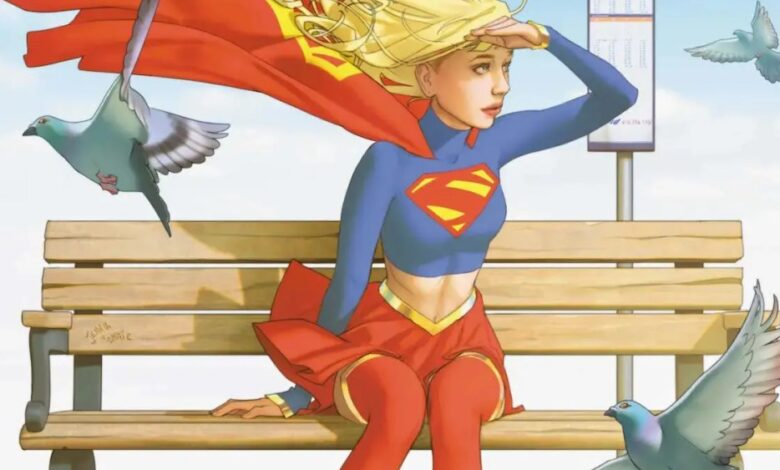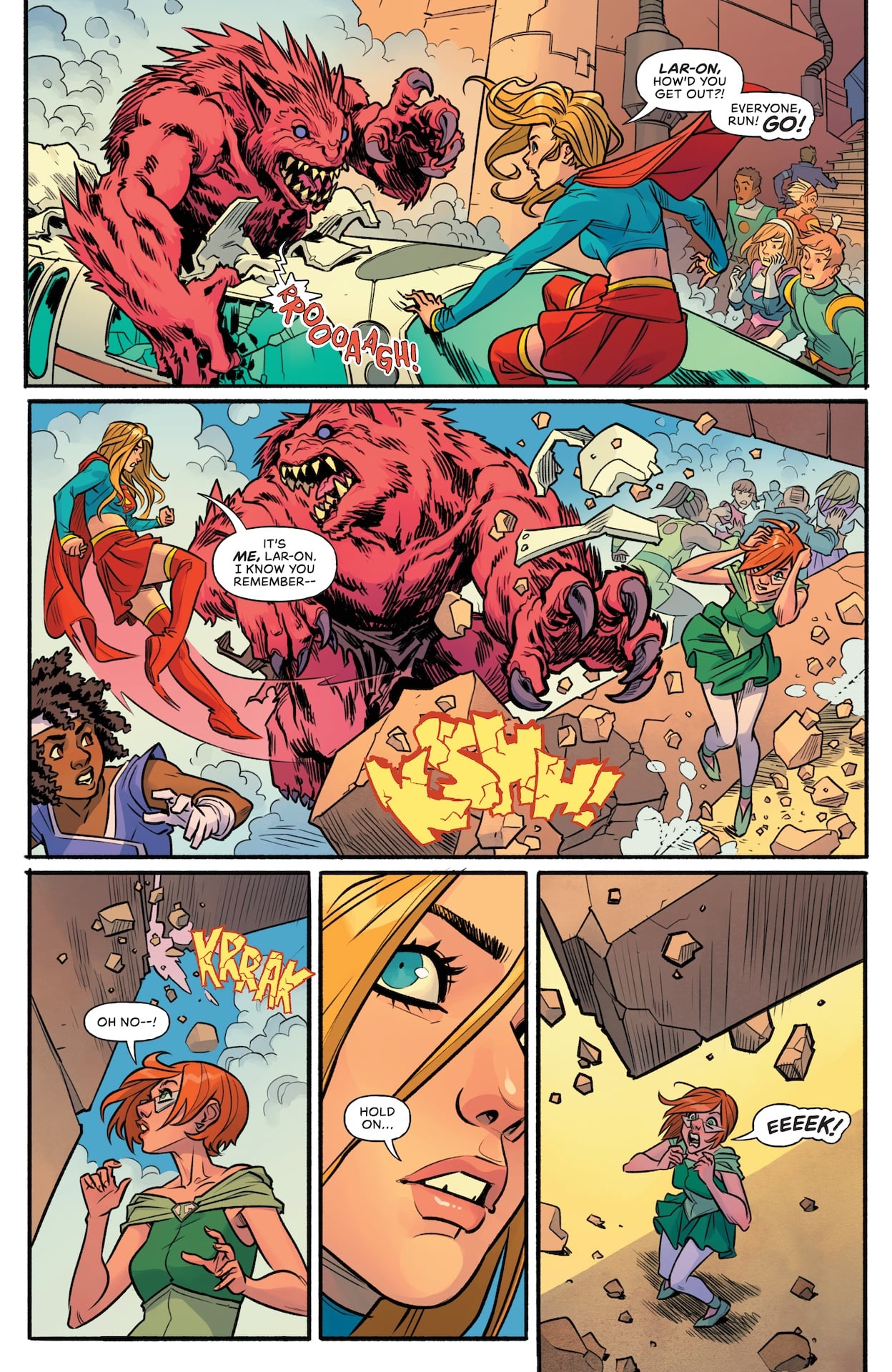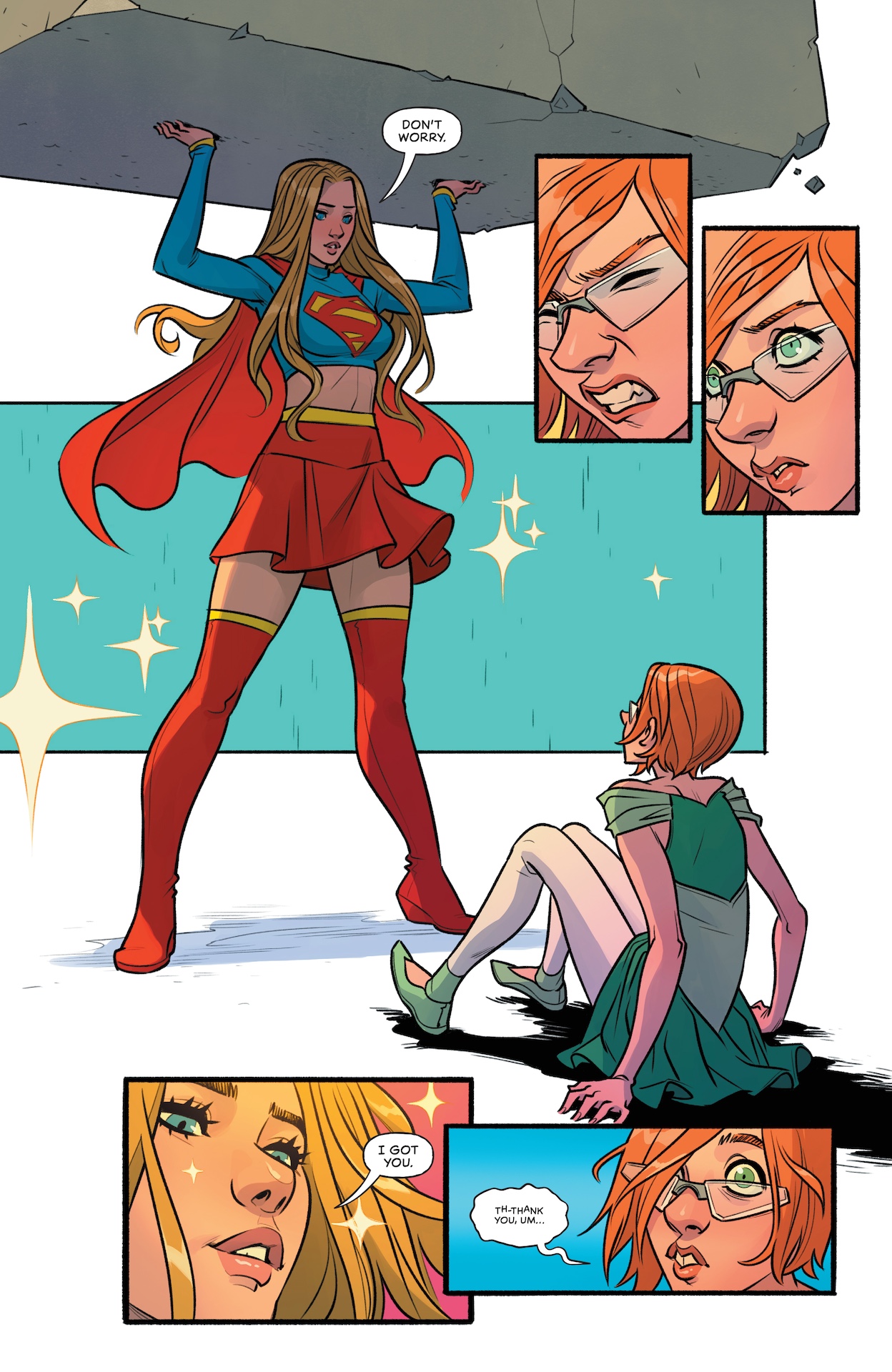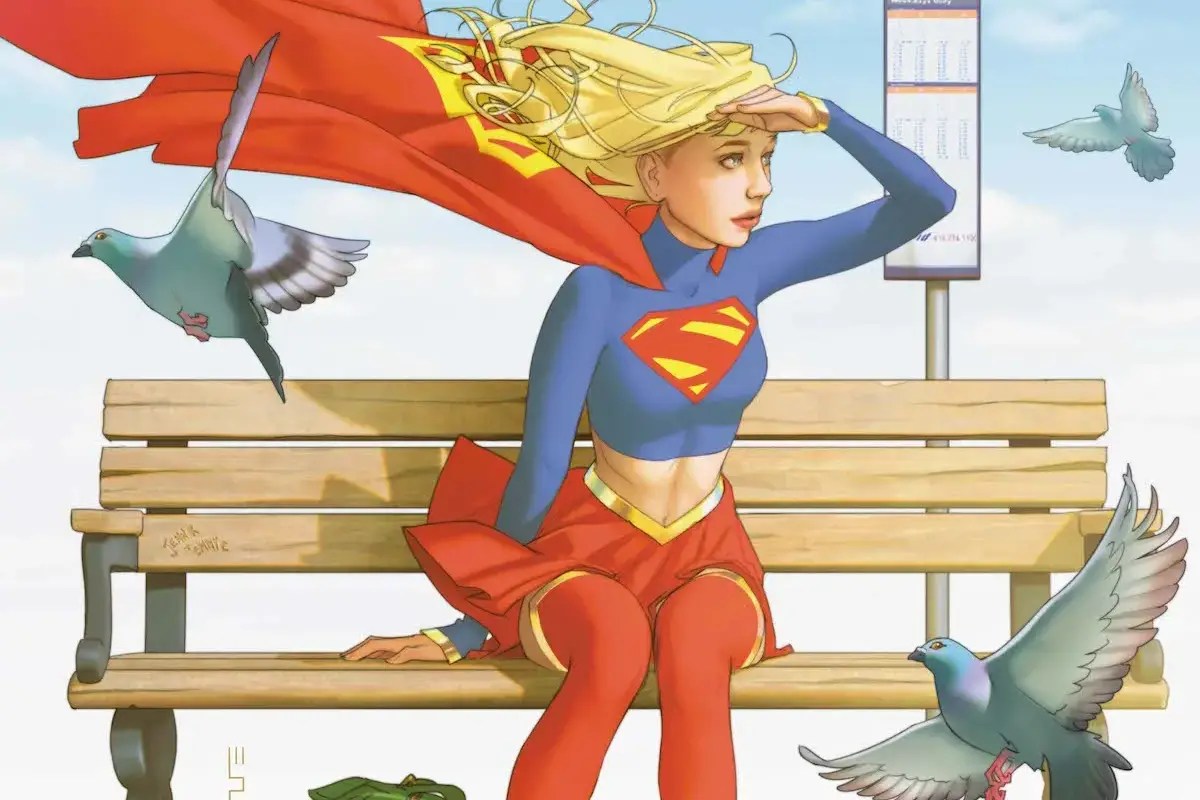Supergirl #1 (2025) review

“Come on, Krypto, let’s go get all those poor sharks back in the ocean…”
Supergirl has seen numerous status quo changes ever since Kara Zor-El was rebooted as part of DC’s New 52 initiative way back in 2011. After Rebirth restored some version of the post-Crisis on Infinite Earths continuity in 2016, Kara has struggled to find her footing. More specifically, her solo title has seen various relaunches, with none of them truly taking flight. After the 2022 event, Dark Crisis on Infinite Earths, DC has been working on restoring its pre-Crisis continuity.
Restoration of DC’s Silver Age history has largely been the purview of writer Mark Waid in Batman/Superman: World’s Finest. Though Supergirl has had a prominent role in this title, Waid has not been retelling Silver Age stories. Instead, Waid has been recapturing the feel of this era for the character’s new adventures. Artist and writer Sophie Campbell continues this trend in 2025’s Supergirl #1, but without disregarding the heroine’s new history that started in 2011.
DC
One of the delightful things about Supergirl #1 is that it’s very new-reader friendly. It also has a couple of nods to Kara’s Silver Age and Bronze Age histories that her oldest and most passionate fans will easily catch. With a strong script, a bright color palette, very fluid layouts and dynamic action sequences, Campbell does more than establish the optimistic tone of the book – she also establishes who Kara is right away.
After Kara has seen numerous interpretations from different storytellers over the past decade, it is refreshing to see Campbell bring the Maiden of Might back to her roots. Whereas Kara has been largely written as a member of Superman’s larger family in the past few years, Campbell is making it clear in her first issue that Kara is not an extension of her cousin. She even acknowledges this when Kara finds herself questioning how she would do things differently from her cousin and whether she’s kept herself in his shadow.
This beat establishes Kara will be working on establishing an identity for herself in her new series. Another way Campbell makes it clear Kara will be the hero of her own story and not a spinoff of the Superman comics is by revisiting the places and relationships that are unique to her. Right away, Midvale is reintroduced as the main setting for her first adventure. Supergirl fans will immediately recognize Midvale as the first home she had during the Silver Age, complete with the same aesthetics of the 1960s.
Campbell even homages the fact that as Linda Lee and Linda Danvers, Kara tended to disguise herself as a brunette. Of course, during the pre-Crisis continuity, Kara achieved this look by wearing a brown wig. For Supergirl #1, Campbell has Kara “magically” change her hair color with a new device called the “chromatic super-comb.” Despite being a change from the Silver Age, it still homages that era, as heroes were known to use all kinds of convenient devices to achieve immediate results during a mission. Though Kara uses her super-comb for a simple, mundane reason, it still works as an outlandish new device.

DC Comics
Another exciting beat long-time Supergirl fans will enjoy is the return of Kara’s adoptive parents, the Danvers. Interestingly, it’s the New 52 versions of the Danvers who appear in the book, instead of the lesser-known Silver Age versions. More ironic yet? The New 52 versions of the Danvers are themselves based on the characters that originally appeared in the 2015 Supergirl TV series, starring Melissa Benoist. Despite maintaining this New 52 change, however, Campbell still recaptures the wholesome family dynamic of Fred and Edna Danvers from the Silver Age comics.
Another reason bringing back the Danvers is a great development for Supergirl is that it’ll open up exciting new opportunities for character growth. More specifically, it’ll afford Kara the opportunity to have relationships outside the Superfamily and allow her to have a life that is entirely her own. This is necessary to truly set her apart from her more iconic cousin, and it’ll especially recover an aspect of her character that’s been missing since the Bronze Age: her life as Linda Danvers.
Campbell already plants seeds in this direction in Supergirl #1, and it’ll be interesting to see her own take on Kara’s Linda identity. In 2025, Campbell has a chance to further flesh out Kara’s life as Linda in ways that couldn’t be done during the Bronze Age. This could include giving Kara a more steady career, as opposed to working various jobs like she did in that era. This can similarly include giving Kara more solid friendships, and even a steady love interest that could help develop her character in a similar capacity to Lois Lane with Clark Kent. The story opportunities Campbell can explore on this front are endless.
Though Supergirl #1 is off to a strong start and is highly engaging, the one thing that holds it back a bit is the introduction of a new villain posing as Supergirl. Ironically, this isn’t an issue with Campbell’s writing as much as it’s retreading a storyline that was seen as recently as the Power Girl series. This is also continuing the trend of DC giving Supergirl the same storylines and conflicts as her Earth-2 counterpart, Kara Zor-L.

DC
This gives the impression that DC doesn’t know what to do with two Karas existing on the same Earth at the same time. It also spotlights the bigger problem with Power Girl no longer existing on her own Earth: her story can never be properly told. In this case, Power Girl’s storyline is meant to center on the idea of her being a second generation Justice Society hero and the successor of the Golden Age Superman. She’s also supposed to be the second generation World’s Finest duo with Batman’s daughter, the Huntress. Without the Golden Age Superman, Power Girl easily becomes a rudderless character.
The same is not true for Supergirl, who was created to invite more female fans to the Superman brand in a way that differed from Lois Lane. Though Campbell does still cover this base in her first issue without undermining Supergirl’s individuality, the fact remains her story is coming at the heels of Power Girl’s series ending. This risks Campbell’s story feeling unoriginal to fans who just finished reading Power Girl, and could decide not to give the story a chance. This also means DC needs to shift focus back to Power Girl’s more iconic status quo as a Justice Society legacy hero, sooner rather than later.
Once DC stops using Power Girl as “Supergirl-Lite” in the Superman books, this can go a long way to making Campbell’s story feel like a definitive new take on the Girl of Steel. This will also eliminate comparisons to the other Kara because they would no longer be getting the same stories.
Source link



